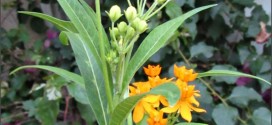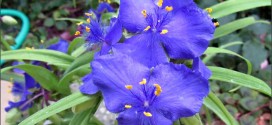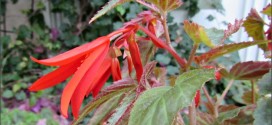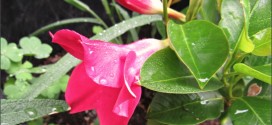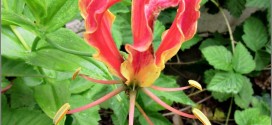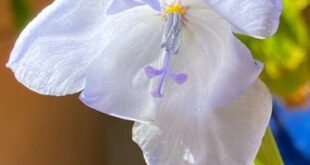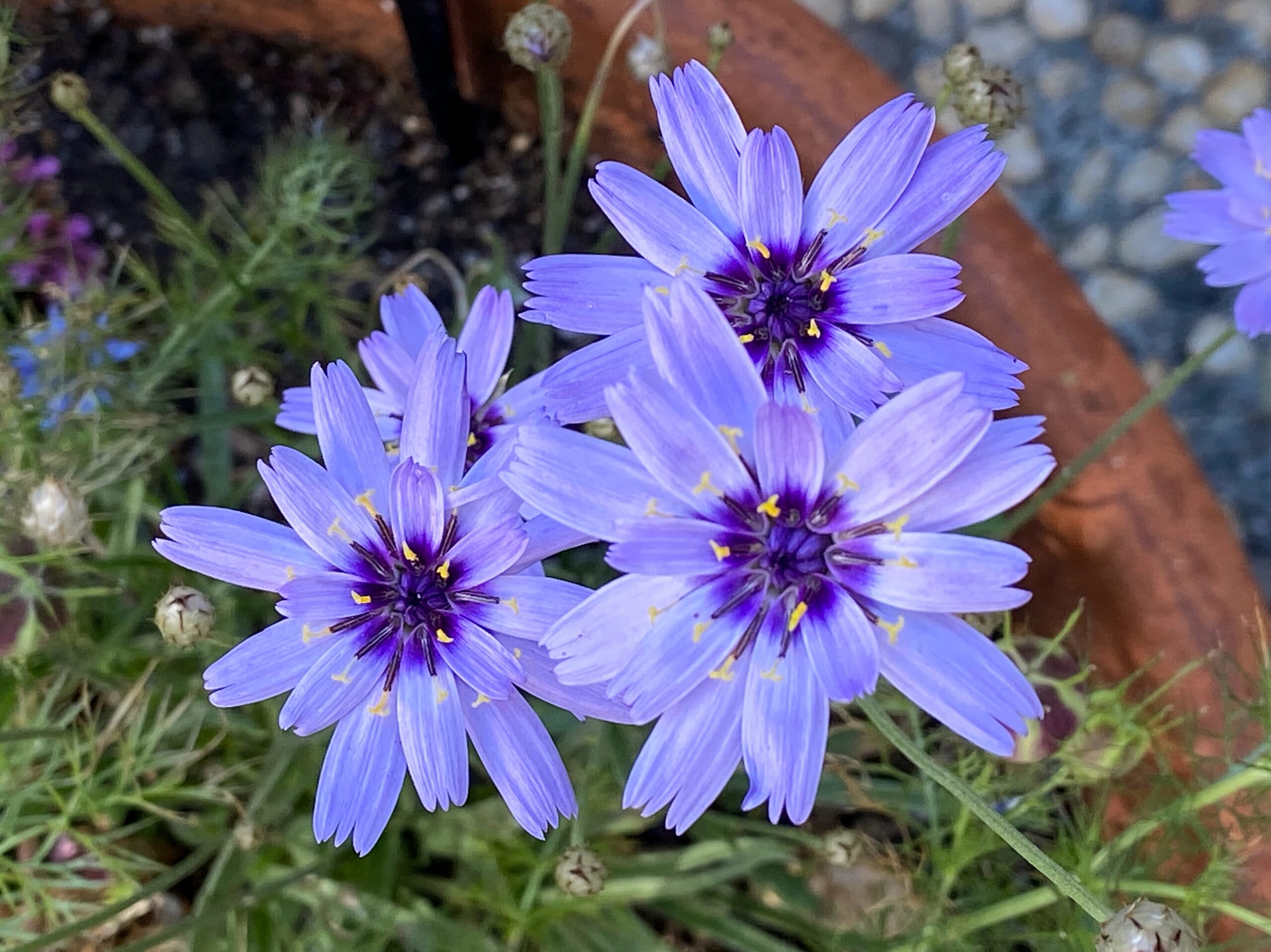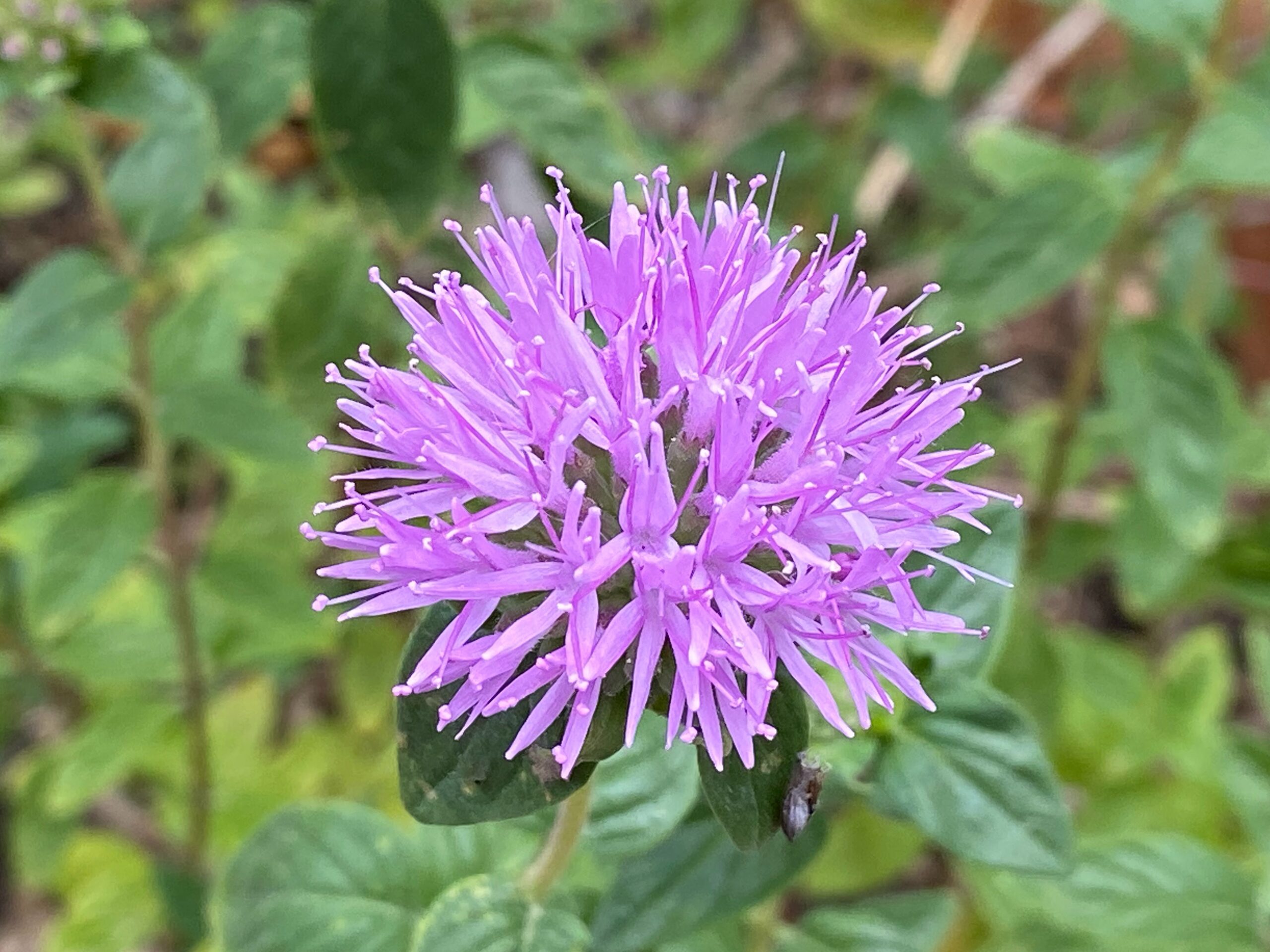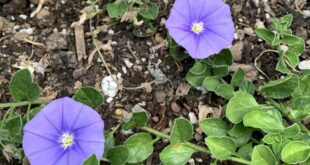One of over two hundred varieties of Asclepias, ‘Silky Mix’ stands out for its beautiful alternating deep red and gold colored blooms. Blooming mid Summer through early Fall, ‘Silky’, like most Asclepias prefers sunny, dry locations and does well in substandard soil. A tender perennial in some zones and annual in others, ‘Silky Mix’ is a beautiful addition to any …
Read More »Tag Archives: perennial
Tradescantia x andersoniana ‘Sweet Kate’
‘Sweet Kate’ is a compact, clump-forming, hybrid spiderwort that is noted for its unique yellow foliage. It typically grows to 12” tall. Three-petaled, purplish-blue flowers (to 1.5” diameter) accented by contrasting yellow stamens are borne in terminal clusters (umbels) atop stiff stems. Numerous flower buds form in each cluster, but individual flowers open up only a few at a time, …
Read More »Begonia boliviens s. ‘Santa Cruz Sunset’
The Santa Cruz Sunset begonia has dramatic angled petals. These plants fall into the tropical and subtropical category of perennials, growing well in U.S. Department of Agriculture plant hardiness zones 6 through 11. Many varieties with ornamental leaves and blossoms grow well outside in USDA zones 10 and 11, while hardy begonias survive winters in USDA zones 6 through 9 …
Read More »Mandevilla vine
Among the garden’s most elegant vines, mandevilla offers stunning trumpet-shape flowers in shades of pink, white, or red. It’s the perfect plant for creating a lush, tropical look. Mandevilla is usually grown as an annual, though it can be overwintered indoors in a bright spot. Note: All parts of this plant are poisonous. First planted in 2014. I relocated the …
Read More »Gloriosa Lily
The exotic yellow and red blossoms of the gloriosa lily (Gloriosa superba), also known as the glory lily, flame lily and climbing lily, cover the plant’s 3- to 8-foot-tall vine. Native to Africa and Asia, gloriosa lilies are generally available in two colors: the red “Rothschildiana” and yellow “Lutea.” A tender perennial, this tropical vine thrives in the warm summer …
Read More »Gelasine coeruleax
A rare member of the Iris family with such unusual colored flowers – sky-blue-flushed light lavender. The anthers are bright purple against a soft white throat. To 2” across, the Iris like flowers face outwards atop upright 12-20” stems and they just keep coming May till September – at least. Slender Iris-like foliage is evergreen for us here in USDA …
Read More »Cupid’s Dart
“Cupid’s Dart” (Catananche caerulea ) provides masses of sturdy, upright stems topped by pearly-papery buds that open into these lovely semi-double, purple-eyed, lavender-blue, 2” blooms. Cupid’s Dart appear continuously from early to late summer, peaking in midsummer. Ancient Greeks and Romans used the flowers as the main ingredient in love potions, hence the amorous common name “Cupid’s Dart”. Genus name …
Read More »Coyote Mint
Noted for its pleasant mint scent, Monardella villosa (Coyote Mint) is a small perennial forming a bushy mound of oval-shaped, soft, light fuzzy grayish-green leaves. They are topped by a profusion of small, bright lavender or pink flowers in dense spherical flower heads from late spring to alate summer. Nectar-rich, the blossoms are attractive to insects, especially bees and butterflies. …
Read More »Buddleia ‘Butterfly Bush’
We have grown Buddleia in containers in our Sunnyvale garden for ten years.The purple flower panicle when it starts blooming in June is very beautiful. Unfortunately for Buddleia, as the year progresses, other flowers and fruits distract us. Buddleja, or Buddleia, commonly known as the butterfly bush, is a genus comprising over 140 species of flowering plants endemic to Asia, …
Read More »Convolvulus sabatius
This pretty and tough evergreen groundcover is one of the most versatile, hard-working plants going! Lovely bluish-purple, open-faced, funnel-shaped 1-2” flowers appear in late Spring and continuing nonstop well into the Fall. Not invasive like some annual “Morning Glories”, this Mediterranean sun-lover needs little water once established. Forms a low, dense, vining mat of foliage 3’ across that helps with …
Read More »